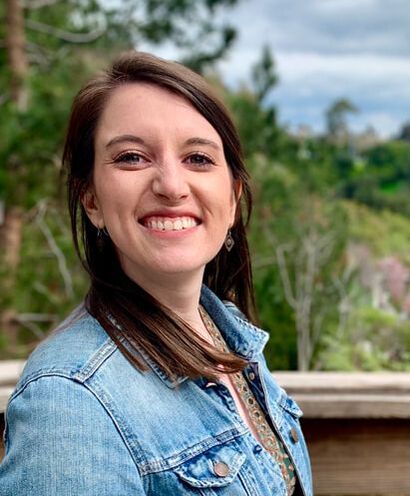ASSAY: A JOURNAL OF NONFICTION STUDIES
6.1
6.1
|
Ever since I can remember, I dreamed of escaping.
Escaping what was always the question… (Khakpour 39) The word diaspora is often reductively defined as an escape, “the dispersion of any people from their original homeland.” Leah Lakshmi Piepzna-Samarasinha’s poem, “diaspora,” from her volume Bodymap, names diaspora differently: “to be in diaspora, maybe you are always a ghost always missing something…”. Through my experience with diaspora and transnational studies, especially thanks to Gayatri Gopinath, I have come to define diaspora much more broadly, something more akin to the “ghost always missing something” that Lakshmi describes. Gopinath expresses a “dissatisfaction with standard formations of diaspora that inevitably foreground the nation as the primary point of reference,” and thus proposes an alternative cartography (Gopinath 4). This new kind of theoretical mapping “rejects dominant cartographies that either privilege the nation-state or cast into shadow all those spaces, and gender and sexual formations, deemed without value in the map of global capital” (4). This mapping extends to queered, othered, and alternative bodies and formations (physical and psychological), including those othered by illness and disability. For Gopinath, and for the purposes of this study, “‘queerness’ here names a state of being out of place and disoriented in the landscape of heteronormativity” (21). This notion of disorientation is often expressed by individuals with “unruly” bodies, bodies that defy the heteronormative definitions of health and wellness and refuse to be disciplined into normative ways of “well-being.” One such voice is evident in Porochista Khakpour’s 2018 memoir, Sick, labelled on the back cover her “grueling, emotional journey” as a woman, an Iranian American, a writer, and a chronically ill person. The memoir thus navigates her queer diaspora: her attempted escape from the hegemonic constructs that define her existence as a disabled-and-suffering woman of color. Khakpour’s Sick is a brutally honest depiction of “escaping” from what is deemed home—the place, space, and body already prescribed. Her memoir conveys her long battle with illness which ultimately results, after $140,000+ spent on medical bills, in a diagnosis of late-state Lyme disease. The narrative relies heavily on the movement from place to place, chronicling her family’s flight from Tehran and the Iran-Iraq War, to “Tehrangeles,” an Iranian community in Los Angeles, then to the dreamlike New York City, Santa Fe, small-town Pennsylvania, Germany, et cetera. Throughout it all, she navigates a search for self, a becoming, or alternatively, an escape from the heteronormative body/space/place she cannot fully occupy. The memoir intimately describes the physical and psychological symptoms of Lyme, in addition to her addiction patterns and other encounters with illness, in order to confront the misconstrued notion that bodies are faultless and flawless houses for our beings. Susan Wendell, in her article “Toward a Feminist Theory of Disability,” asserts, “disability is not a biological given; like gender, it is socially constructed from biological reality. Our culture idealizes the body and demands that we control it. Thus, although most people will be disabled at some time in their lives, the disabled are made ‘the other’” (Wendell 104). Wendell argues that chronic illness be recognized as a disability, and so too does Khakpour. Her narrative describes Lyme disease as one “that many in the medical profession, unless they specialize in it, find too controversial, too full of unknowns, to fully buy it as legitimate,” othering her because of her biological reality (Khakpour 21). Thus, though she is the accumulation of her own (dis)embodied experiences, she is denied full inhabitance of her body, over and over again, because of caregivers’ hesitancy in assigning a diagnosis of Lyme, or for that matter, any diagnosis at all. Even long before Khakpour’s official diagnosis, and her endlessly repeated hospital stays, she felt a discomfort in her body. When her body met with chronic illness and disability, she “grew to feel at home” (6). The cover image depicts Khakpour herself, lying down, eyes wide but fixed and sure, mouth closed, nasal cannula hooked in place behind her ears, thick black hair fanning around her head. In this image, and in the memoir itself, she is confronting her audience with this stare and with the spill of pills that border her name and existence and the title of the book, challenging caregivers’ denial of her “othered” body and creating a space for herself via the health humanities. Early in the memoir, Khakpour voices, “I am a foreigner, but in ways that go much deeper… under the epidermis and into the blood cells” (Khakpour 6). Her body is “foreign,” strange, as it resists heteronormative modes and diagnoses. In a New Yorker review of Sick, Lidija Haas writes that “pain and disease are what they are—they resist meaning and the narratives that make it. Other people’s sicknesses, as bodily phenomena, must be imagined or taken on trust, since they can never quite be transmitted across the gap” (13). So many bodies and persons fall into this gap because they are queer, queer to their friends and family and queer to caregivers and healthcare providers. This “gap” deserves to be explored, in order to pay attention to the persons and queer bodies that have fallen into its cavernous mouth, and to be bridged, by establishing a framework, or a transnational net rather, of adequate caregiving. Such a framework can draw from Gopinath’s vision for a queer optic, which “brings into focus and into the realm of the present the energy of those nonnormative desires, practices, bodies, and affiliations concealed within dominant historical narratives” (Gopinath 4). Why is it that nonnormative bodies such as Khakpour’s are consistently denied existence by the Western and hegemonic optic, in other words, the heteronormative way that providers see patients? She experiences so many different symptoms, and attempts treatments with an array of formal practitioners and intimacy with a number of informal caregivers. But despite her attempts, she is largely ineffectively cared for, due to her “queer” existence as a woman of color navigating chronic unhealth, and her insufficient care for herself. Through this study, I hope to name the what that Khakpour is escaping from, to shed light on her and other patients’ experiences of “queering” via disease and healthcare, and to analyze and critique caregivers’ perceptions of queer bodies, thus querying (or queering) caregiving for “others.”
|
|
Lorna Hummel is a recent graduate of Creighton University's Master of English program in Omaha, Nebraska. She chose to focus within the field of Narrative Medicine throughout her graduate studies, as it truly encompasses both her love for literature and her passion for medicine and patient care. Her Master's thesis, entitled "Embodied Experiences of Caregiving: Literature as a Lens for the Health Humanities," attends to caregivers, formal and informal, demonstrating the weight of their work and how they are othered from those that they care for, the communities that surround them, and themselves. Lorna will enter into the Master of Physician Assistant Studies program at the University of Nebraska Medical Center in August of 2019.
|

